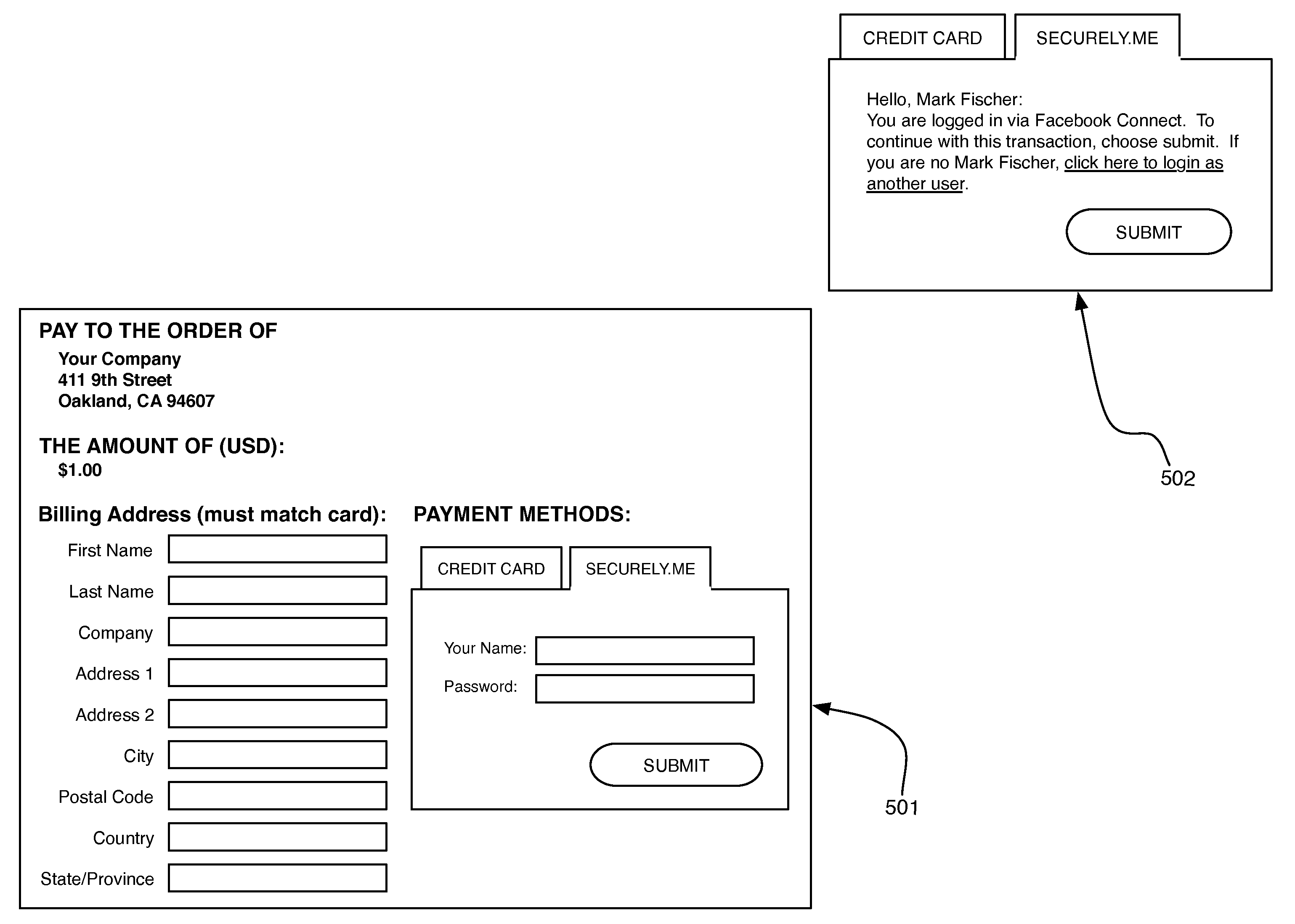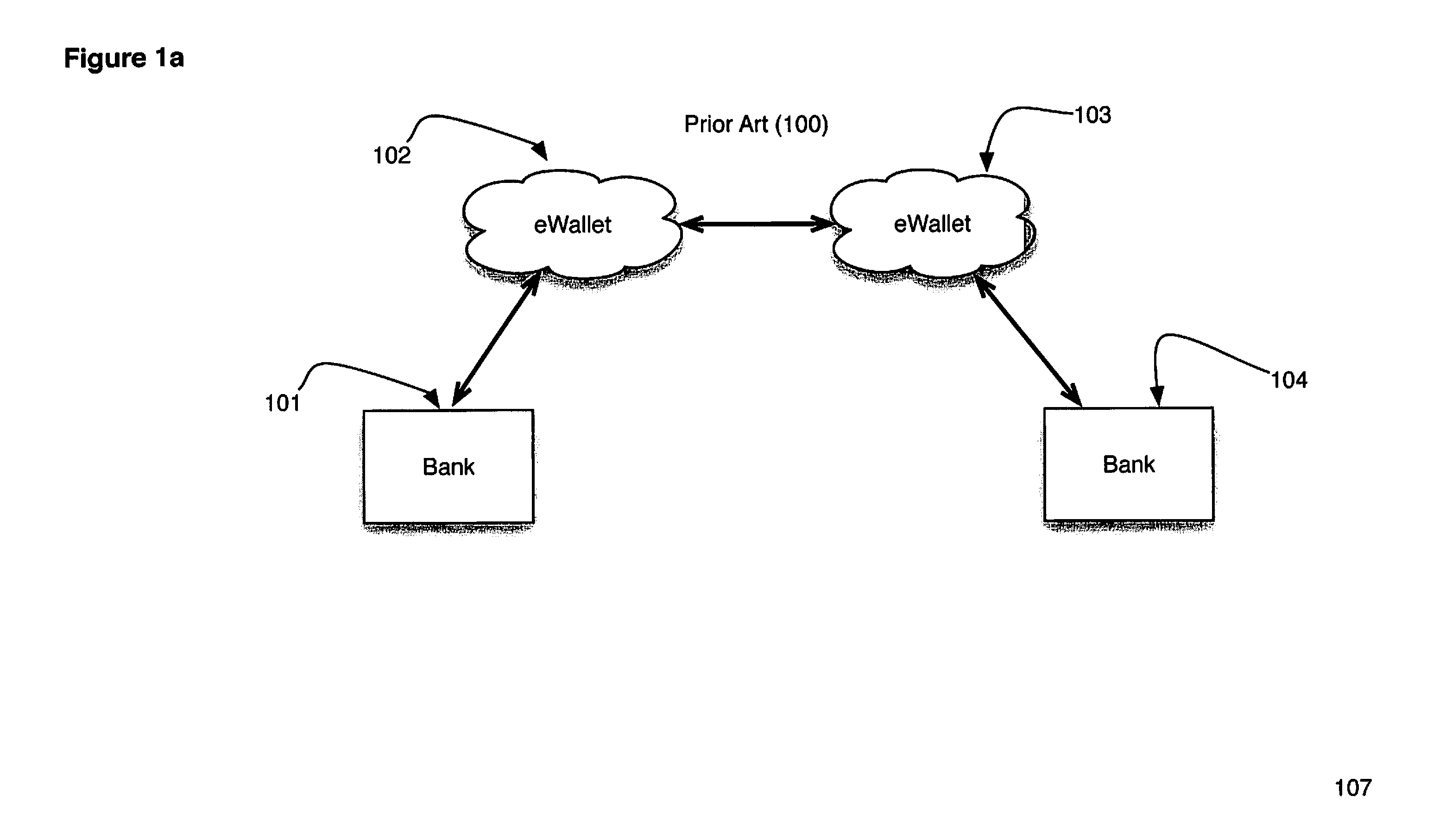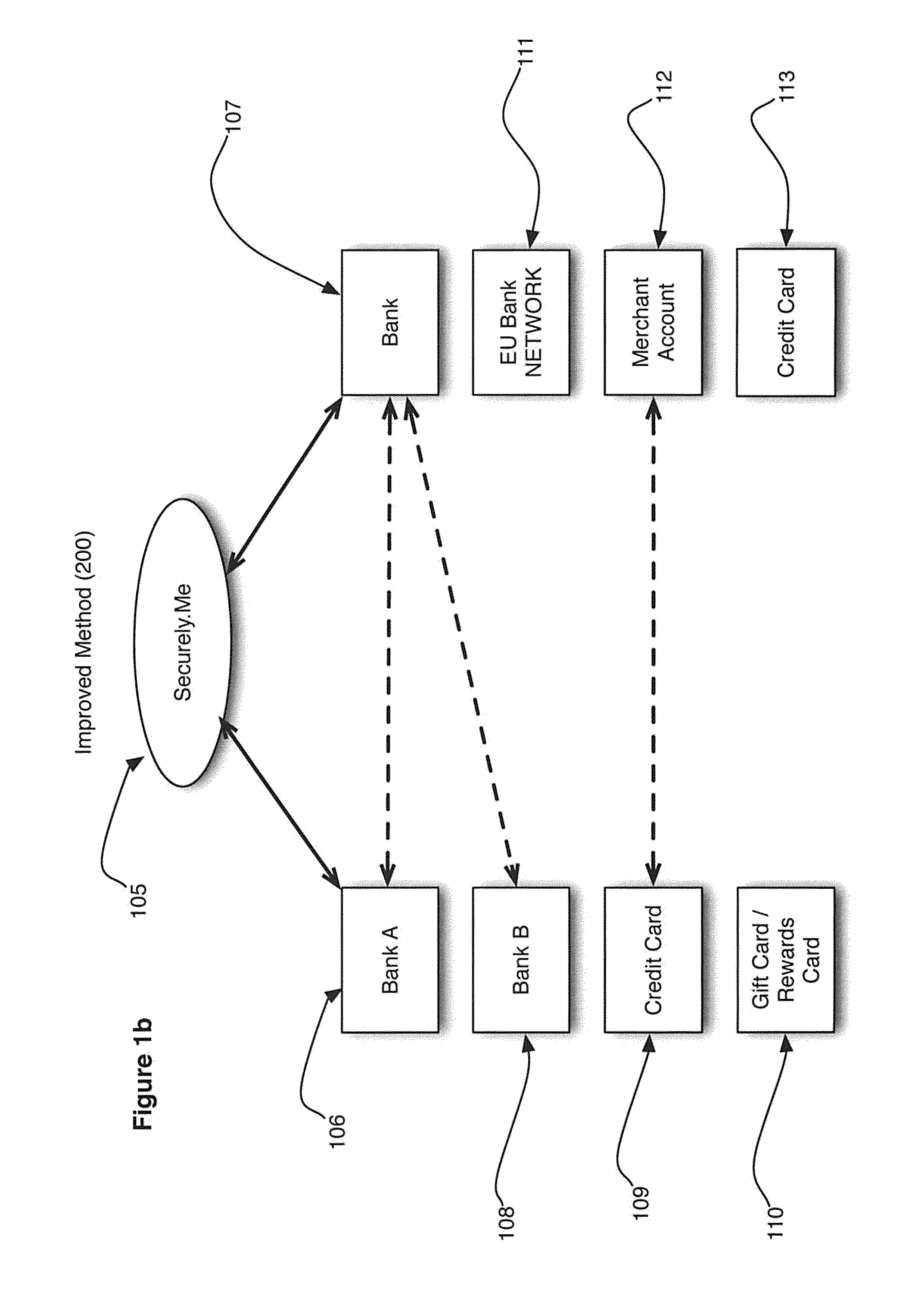[0009]In the preferred embodiment, this includes the option to enter
payment information on multiple account types. The present invention enables a customer to enter in account information on all there accounts whether that account is a
credit card account (the typical type of account used by merchants online), AC H / checking accounts, online
bank accounts (such as PayPal®), or any other type of financial account. In other words, the present invention provides a comprehensive way to map all financial accounts into a single location. On the other end of the system, merchants can likewise map in all of the methods by which they may be paid, including all merchant accounts, ACH accounts,
Bank Account Information for Wire Transfers,
Gift Card / Loyalty Card systems, and any other system which allows the merchant to engage in commerce.
[0011]For example, a customer could elect to require a four-digit pin and a special passcode in order to permit any transactions over $100. In the event that the transaction is over $500, an additional code or passkey may be required. Similarly, if a customer is executing a transaction with a merchant that is in a higher risk industry (such adult products), the security requirements could be enhanced to prevent fraudulent misuse. In other words, the totality of the circumstances that define the transaction—from the person that initiated it (owners vs employees; children vs wife), the device used (mobile vs PC), it's location (near home city vs traveling) as well as the identity, type and frequency of interaction with the merchant can all be used to help determine not simply whether or not the transaction is approved but rather the number and type of security protocols that will need to be followed in order to finalize the transaction. In a very real sense, then, the
consumer (and merchant) are now given the tools to help define the gateways and protocols which will be applied to each of their financial accounts and the context under which they want to make a transaction either easier or more difficult to execute.
[0012]The present invention further provides a set of tools and capabilities for making these transactions easier. In one embodiment of the present invention, the customer not only links each key financial account but also allows the system to pull information regarding those accounts in order to optimize cost, convenience and
payment flexibility. This feature can be best understood by imagining a common online transaction. I buy a stereo for $500. In the prior art, I would enter my
credit card or otherwise link a
payment account and send $500. If the account I used does not have $500, the transaction is declined. Now consider a situation in which that same customer is using the current invention. By linking several accounts, the payment platform can now identify how much credit or balance is available across each account as well as which payment methods on file may interact with the specific merchant in question.
[0014]On the merchant side, the present system and method further provide conveniences around ease of administration as it provides a simple
open API to engage with multiple payment
receipt services and otherwise enables a merchant to be largely independent of the means that a customer may employ to pay for services. For example, Merchants can use a simple configuration page to not only specify which payments they receive but also what additional requirements must be met to meet the transaction. Finally, by using simple
java or other “contained” code, the merchant can add the payment functionality to their website without altering any code whatsoever. Indeed, the
javascript in the preferred embodiment would “pull” any calls or fields it would need to complete a transaction on behalf of the Merchant depending on how the merchant had configured the services from a financial
software server but again—the other code would otherwise remain unchanged. This is a significant
advantage over current systems from both ease of administration and simplicity.
[0016]While I have summarized a few of these capabilities with reference to the customer, the merchant could also modify these same configurable security and payment options. For example, since many merchants do not like to pay the 2-3% transaction fees often charged by
credit card companies, they could limit payment options to ACH or other cash-based accounts with lower fees. They could also limit use of certain financial accounts that are more prone to fraud or misuse. For example, a merchant could permit the first $100 of a transaction to be paid using any means but transactions over $500 could only be processed using a checking account. Merchants can also transfer the cost of those fees by offering a 3% discount to members that pay for merchandise with cash. In such a case, the
payment system of the present invention would enable a customer to not only optimize use of their financial accounts but also optimize or minimize the fees and identify the financial accounts that the merchant has agreed to accept. In this way, a merchant can set their
risk threshold, reduce fraud and minimize transactions costs while the customer can optimize their buying behaviors, using security rules that they define and have immediate awareness of the payment methods and accounts that can be used to reimburse the merchant. While this was intended to provide an overview of the invention, there are many other features, functions and variants that are possible using the current system which shall be explained in greater detail with reference to the figures below.
 Login to View More
Login to View More  Login to View More
Login to View More 


